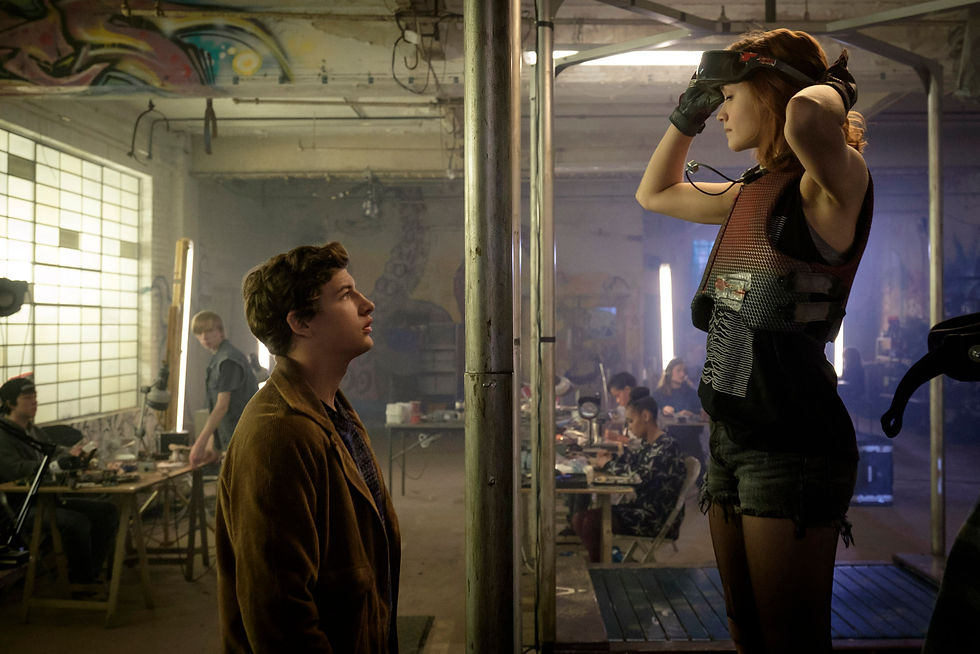Review: Ready Player One
- Pamela Villaflores
- Apr 1, 2018
- 4 min read

A steam locomotive pulling into a train station in the Lumière Brothers 1896 short, L'arrivée d'un train en gare de La Ciotat. A giant gorilla atop the Empire State Building in 1933's King Kong. The narrative and visual complexity of Orson Welles' 1941 Citizen Kane. The jump cuts in Jean-Luc Godard's 1966 À bout du souffle (Breathless). The celluloid break in Ingmar Bergman's 1966 Persona. The visual world of Ridley Scott's 1982 sci-fi noir Blade Runner. These are some of the many things that revolutionised film, that made one believe that whatever one thought was possible was only the beginning.
Steven Spielberg has been responsible for many an impactful, game-changing moment in films such as Jaws, Close Encounters of the Third Kind, E.T.: The Extraterrestrial, and Jurassic Park. One could even argue that no other filmmaker could claim as many of these moments as Spielberg and yet, whilst Spielberg has received more than his critical and commercial due, there's still the sense that the populism of his works prevents him from achieving indisputable auteur status. Why is that? Commercialism and artistry are not mutually exclusive, and aiming for the heart is as difficult a task as aiming for the mind. For almost half a century, Spielberg has been delivering films that have melded the innovative with the humanist and, whilst one can argue that the balance has swung in favour of the former in his latest works, one cannot deny that he has lost the knack for speaking to the child in all of us.
Ready Player One, adapted from the 2011 novel by Ernest Cline by Cline himself and Zak Penn, once again displays Spielberg's talents for harnessing next-generation technology in service of the themes that have been constants in most if not all of his works. There's the lost child from a broken home - in this case, an 18-year-old orphan named Wade Watts (Tye Sheridan), living with his aunt in Columbus, Ohio. The year is 2045 and the majority of the Earth's population are living in the "stacks," slums comprised of trailer homes stacked on top of one another. Like most of the residents looking to escape from the grimness of their poverty-stricken lives, Wade spends most of his time in the Oasis, a virtual reality world created by the late James Halliday (Mark Rylance), who is revered by the masses.
The main thrust of the tale revolves around the hunt for the Easter egg that Halliday left in the Oasis before he died. In order to find it, one must complete three quests in order to obtain three keys which will unlock the location of the Easter egg. The first person to find the Easter egg will not only inherit Halliday's trillions but have full control over the Oasis. Five years have passed since Halliday's death and not one person has managed to get past the first quest, which involves a car chase on an ever-changing cityscape replete with obstacles such as speeding trains and huge spikes coming out of nowhere as well as the mighty King Kong himself. This sequence is jaw-dropping to say the least - there are instances such as the way Kong smashes into view from the side that feels like it's never been seen before - but somehow Spielberg not only maintains the very high bar he sets for himself but raises it and raises it again throughout the film.
Take the amazing sequence which takes place smack dab in the world of Kubrick's The Shining. That The Overlook Hotel and many of the film's most indelible moments are astonishingly recreated is impressive enough, but to up the ante with seamlessly integrating CGI characters within that live-action setting is almost beyond comprehension. Indeed, one of the most remarkable feats in Ready Player One is how, despite being a stuffed-to-the-gills smorgasbord of pop culture references, it is never derivative or detrimentally steeped in nostalgia. To use an old adage, Spielberg makes everything old feel new again.
Not that Spielberg doesn't fall into his usual trap of slipping into silly sentimentality in the final stages of the film. Unlike A.I.: Artificial Intelligence where that bad habit was truly exasperating, it's more forgivable in Ready Player One. Mostly, it's hard to begrudge a filmmaker who has given audiences the mash-up to end all mash-ups - where will viewers ever see the Teenage Mutant Turtles, the Batmobile, the Iron Giant, Mechagodzilla, a scene-stealing Chucky, the monster fetus from Alien, amongst others all in one film ever again, not to mention the endless cultural references that would take multiple viewings to identify. Yet, the most striking and unforgettable image is arguably that of a young boy playing a video game - both entranced and imprisoned.
Ready Player One
Directed by: Steven Spielberg
Written by: Zak Penn, Ernest Cline; based on the novel by Ernest Cline
Starring: Tye Sheridan, Olivia Cooke, Ben Mendelsohn, T.J. Miller, Simon Pegg, Mark Rylance, Lena Waithe, Win Morisaki, Hannah John-Kamen, Letitia Wright, Mckenna Grace





Comments